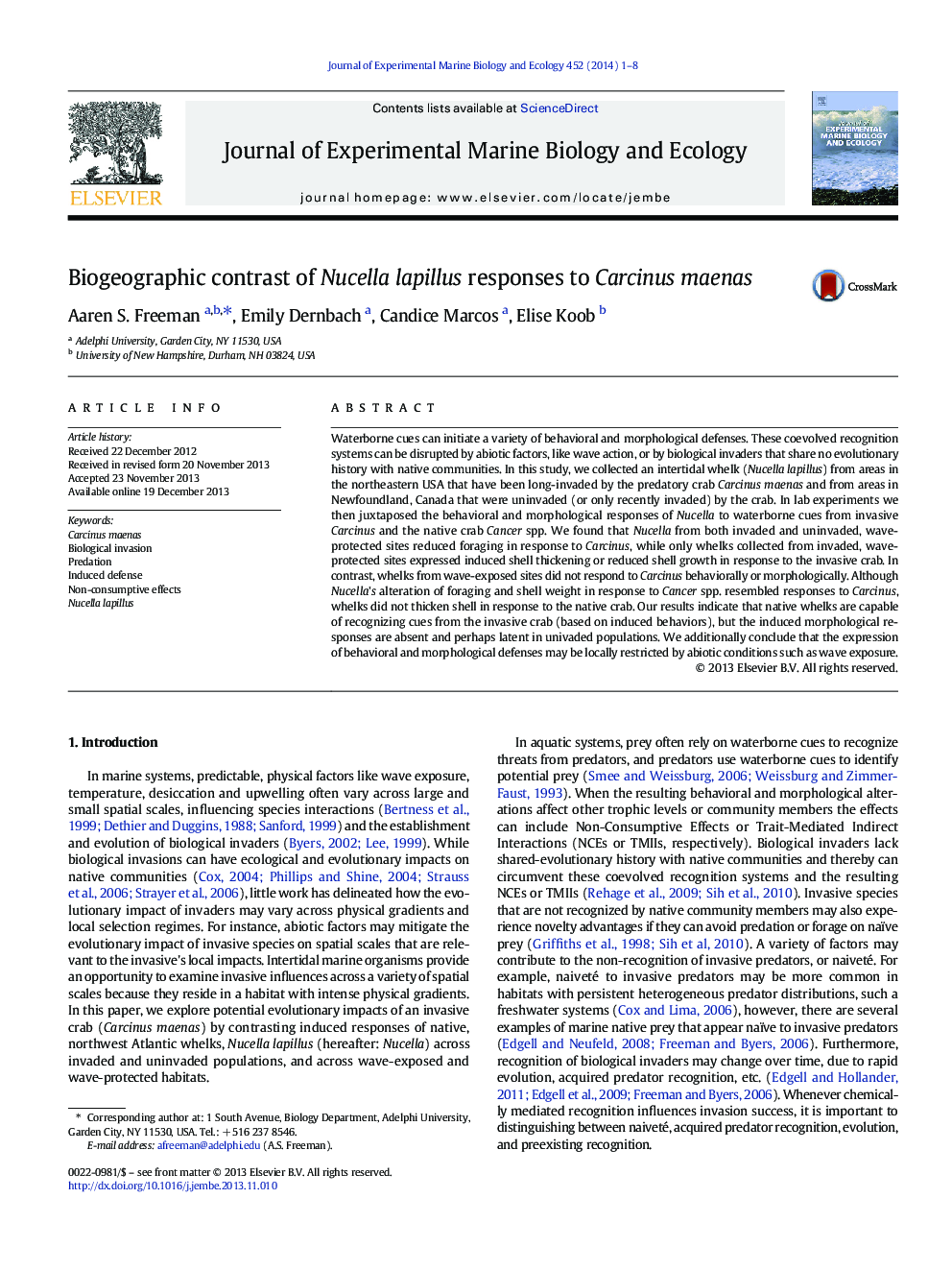| کد مقاله | کد نشریه | سال انتشار | مقاله انگلیسی | نسخه تمام متن |
|---|---|---|---|---|
| 4395548 | 1618423 | 2014 | 8 صفحه PDF | دانلود رایگان |

• Carcinus' waterborne cues caused Nucella to reduce foraging and thicken shells.
• Wave-protected populations of Nucella (invaded and uninvaded) reduced foraging in response to Carcinus.
• Nucella from wave-exposed sites did not reduce foraging in response to Carcinus.
• Only invaded, wave-protected Nucella responded morphologically to Carcinus.
• Induced morphological responses are absent in Nucella's uninvaded populations.
Waterborne cues can initiate a variety of behavioral and morphological defenses. These coevolved recognition systems can be disrupted by abiotic factors, like wave action, or by biological invaders that share no evolutionary history with native communities. In this study, we collected an intertidal whelk (Nucella lapillus) from areas in the northeastern USA that have been long-invaded by the predatory crab Carcinus maenas and from areas in Newfoundland, Canada that were uninvaded (or only recently invaded) by the crab. In lab experiments we then juxtaposed the behavioral and morphological responses of Nucella to waterborne cues from invasive Carcinus and the native crab Cancer spp. We found that Nucella from both invaded and uninvaded, wave-protected sites reduced foraging in response to Carcinus, while only whelks collected from invaded, wave-protected sites expressed induced shell thickening or reduced shell growth in response to the invasive crab. In contrast, whelks from wave-exposed sites did not respond to Carcinus behaviorally or morphologically. Although Nucella's alteration of foraging and shell weight in response to Cancer spp. resembled responses to Carcinus, whelks did not thicken shell in response to the native crab. Our results indicate that native whelks are capable of recognizing cues from the invasive crab (based on induced behaviors), but the induced morphological responses are absent and perhaps latent in univaded populations. We additionally conclude that the expression of behavioral and morphological defenses may be locally restricted by abiotic conditions such as wave exposure.
Journal: Journal of Experimental Marine Biology and Ecology - Volume 452, March 2014, Pages 1–8